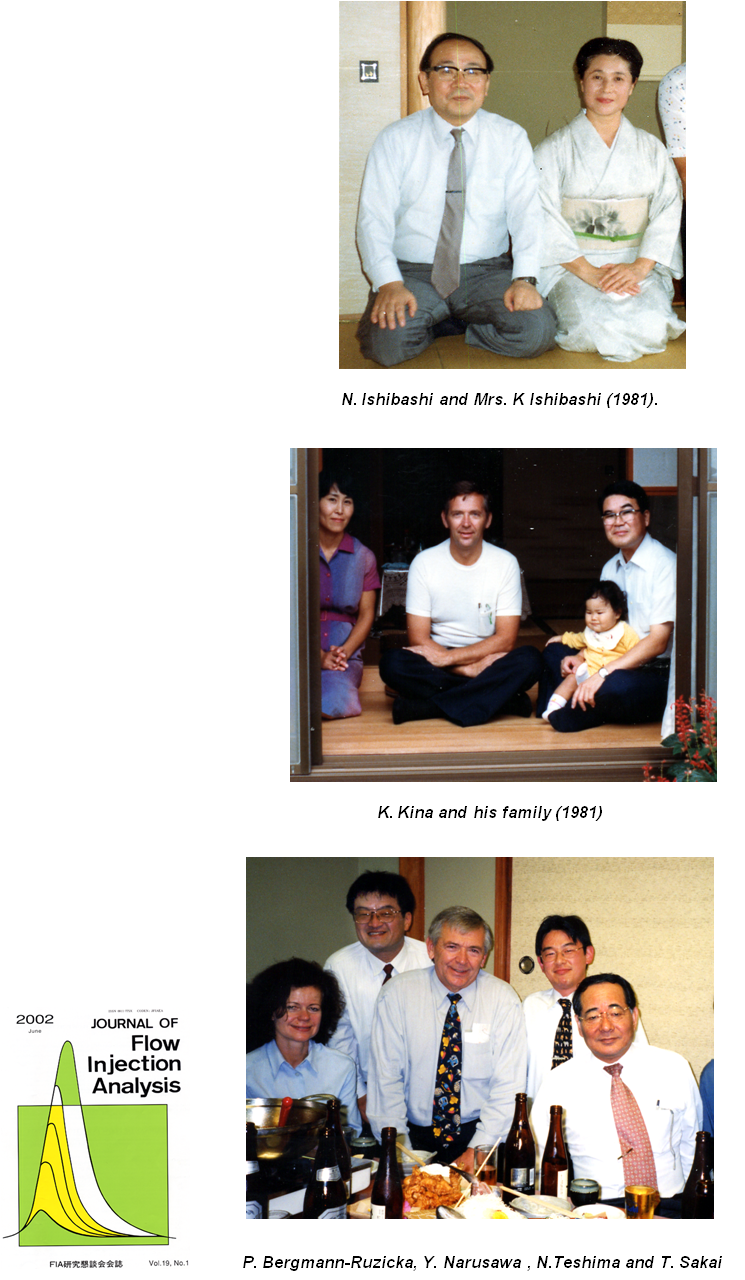Japan
5.1.12.
No other country has embraced FIA with greater enthusiasm and energy. Japanese scientists visualized the potential of FIA from the very start. It was Prof. N. Ishibashind Dr. N. Yoza who translated the 1st edition of “Flow Injection Analysis” into Japanese in 1981. They arranged my first visit to Japan, where I was hosted with unparalleled hospitality and invited to lecture in Tokyo, Nagoya and Kumamoto.
Among my hosts was Dr. K. Kina, who two years later authored the first Japanese monograph on FIA with Prof. K. Ueno. Soon, the Japanese Society\for Flow Injection Analysis (JAFIA) was founded, and the Journal of Flow Injection Analysis began (1983). An extensive FIA Bibliography is currently managed by Society volunteers. For the last 30 years, the Society’s semiannual meetings have been alive with presentations and innovations. FIA research has thrived not only in Academia, but also in industry. Hitachi, Sanuki, DKK and other companies introduced commercial FIA instruments. New research groups were formed, and novel variations of FI were introduced. The groups of Prof. T. Yamane and Prof. T. Sakai apply FIA to environmental monitoring, Prof. I. Daido, designs nanoliter FIA systems, Prof. H. Toshiuki applies microchip technology. Recently,SI and BI have been reviewed by T. Sakai and N. Teshima, who use FIA to monitor air and water pollution by spectrophotometry and fluorescence. Sakai also works on multichannel flow systems for metal assay, and Teshima develops catalytic spectrophotometry of
pharma-ceuticals. S. Motomizuuses gas diffusion
coupled with reversed FI for assay of nitrogen
compounds and FI-ICP for traces of metals.
NAD/NADH- coupled assays are developed by K.
Matsomoto. As this incomplete account indicates,
FI techniques have found wide application, and
FIA is an integral part of thriving research activity
in Japan.










